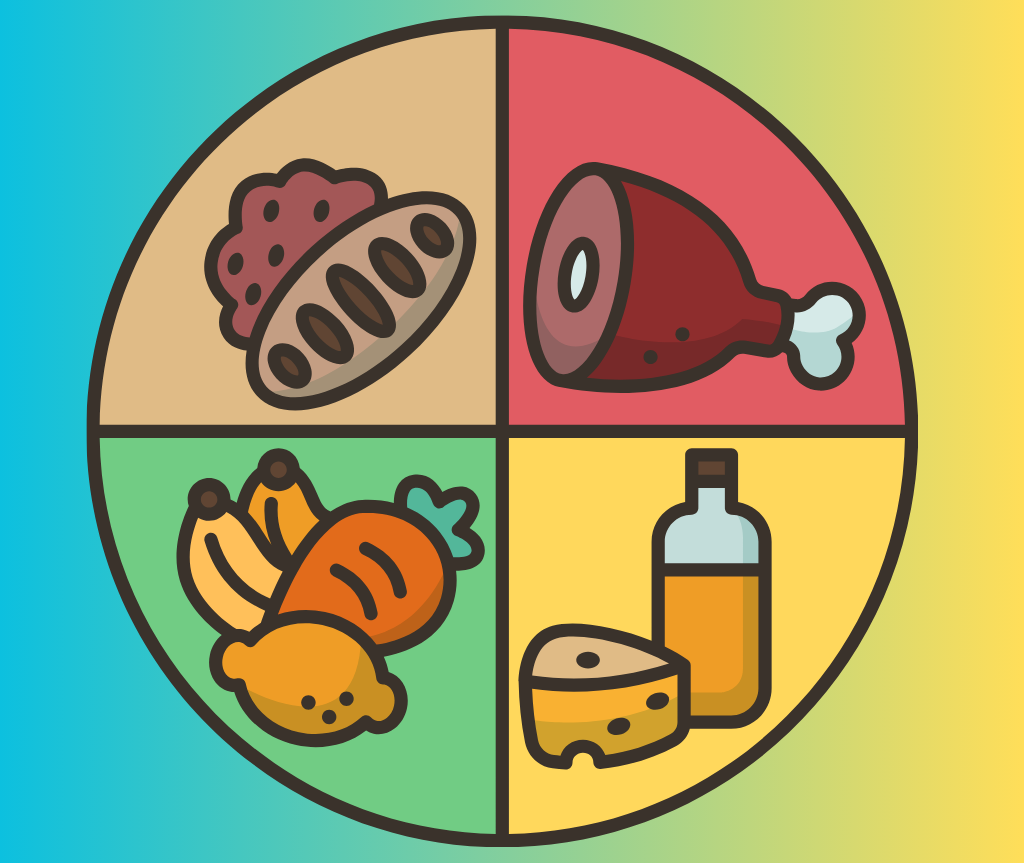Do you ever feel overwhelmed by the endless wave of diet advice? One week it’s “cut carbs,” the next it’s “eat more fat.” Then come the miracle superfoods and the no-sugar challenges.
It’s confusing — but here’s the truth: eating well doesn’t need to be complicated.
At its core, a balanced diet comes down to two simple elements that keep everything running smoothly — macronutrients and micronutrients.
Once you understand how these two work together, healthy eating starts to feel less like a guessing game and more like an everyday rhythm you can actually enjoy.
1. What Are Macronutrients and Why Do They Matter?
Think of macronutrients as your body’s fuel and building blocks — the “macro” because you need them in large amounts.
They’re made up of carbohydrates, proteins, and fats, and each one plays a different but equally vital role.
2. Carbohydrates: Quick vs. Lasting Energy
If your body were a car, carbohydrates would be your primary fuel source.
They power everything — from a morning workout to your brain firing up for that 3 pm meeting.
There are two types:
- Simple carbs, such as sugar or white bread, provide you with fast energy but can leave you crashing soon after.
Complex carbs, such as oats, quinoa, or lentils, digest slowly, providing sustained energy and keeping your gut healthy.
A good rule of thumb: choose whole, colourful carbs that come with fibre and nutrients — the kind that leave you feeling steady, not sluggish.
3. Proteins: The Body’s Builders
Protein is like your body’s repair crew — it mends, rebuilds, and supports everything from muscles to hormones. Whether you lift weights or chase toddlers, you need it.
Animal foods (chicken, eggs, fish) give you complete proteins, while plants (beans, lentils, nuts, tofu) offer incomplete ones that can work beautifully together.
Pairing foods like rice and beans creates a complete amino acid profile — a perfect example of food synergy.
4. Fats: The Unsung Heroes
Fats often get a bad reputation, but your body can’t thrive without them. They cushion your organs, support brain health, balance hormones, and help you absorb vitamins like A, D, E and K.
There’s a simple way to think about fats:
- Unsaturated fats = heart-friendly (avocado, olive oil, nuts, fatty fish)
Saturated fats = enjoy sparingly (butter, red meat, pastries)
Try this: drizzle olive oil over roasted vegetables or swap crisps for a handful of almonds. Small swaps, big difference.
5. Micronutrients: The Small but Mighty Players
If macros are the main characters, micronutrients are the backstage crew — invisible but indispensable.
They’re your vitamins and minerals, needed only in trace amounts but essential for energy, immunity, and repair.
Vitamins
They help with everything from energy production to immune strength.
- Vitamin C keeps your defences strong.
- Vitamin K helps blood clot properly.
B vitamins convert food into usable energy.
Minerals
These are the elements your body relies on for structure and function.
- Calcium builds bones.
- Iron carries oxygen.
- Zinc strengthens immunity.
Potassium helps keep muscles and nerves functioning properly.
It’s easy to overlook them, but even mild deficiencies can drain your energy or dull your focus.
6. How Much Do You Need?
Your needs depend on your body, but general guidelines are:
- Carbs: 45–65% of total calories
- Protein: 10–35% (about 0.8g per kg of body weight)
Fat: 20–35%
For vitamins and minerals, aim to meet around 100% of your daily value (DV) — ideally from food. For instance, adult women need about 18mg of iron, 320mg of magnesium, and 1,000–1,300mg of calcium daily.
If you’re curious whether your diet covers these, track your meals for a few days — you might be surprised how much balance you already have.
7. Eat from Every Corner of the Plate
Nature already offers everything you need — no supplements required for most people.
- Carbs: fruits, veg, legumes, whole grains
- Protein: eggs, fish, tofu, beans, Greek yoghurt
- Fats: avocados, nuts, seeds, olive oil
Micronutrients: berries, leafy greens, colourful veggies, fortified foods
Variety is your nutritional safety net. The more colours and textures on your plate, the more complete your nutrient picture.
8. When Things Fall Out of Balance
You don’t have to be malnourished to feel a deficiency. Subtle imbalances can show up as:
- Afternoon fatigue
- Brittle nails or hair loss
- Frequent colds
- Low mood or brain fog
A blood test or chat with a dietitian can help identify what’s missing and set you back on track.
9. Building a Balanced Plate
The easiest visual guide:
- ½ your plate – fruits and vegetables
- ¼ – lean protein
- ¼ – whole grains or starchy veg
Add a drizzle of healthy fat and a glass of water, and you’ve got a nutrient-dense, satisfying meal.
This simple ratio keeps your macronutrients and micronutrients in sync — no calculator needed.
10. The Bottom Line
Macronutrients and micronutrients don’t compete; they collaborate. One gives you energy, the other ensures your body uses it well. Together, they create the foundation of vitality.
Healthy eating isn’t about perfection — it’s about balance, awareness, and enjoyment.
So tonight, instead of overthinking dinner, start small: swap white rice for quinoa, add a handful of greens, and finish with citrus or berries.
Every colourful, balanced plate is a quiet act of self-care. That’s how you build health — not overnight, but one mindful meal at a time.



